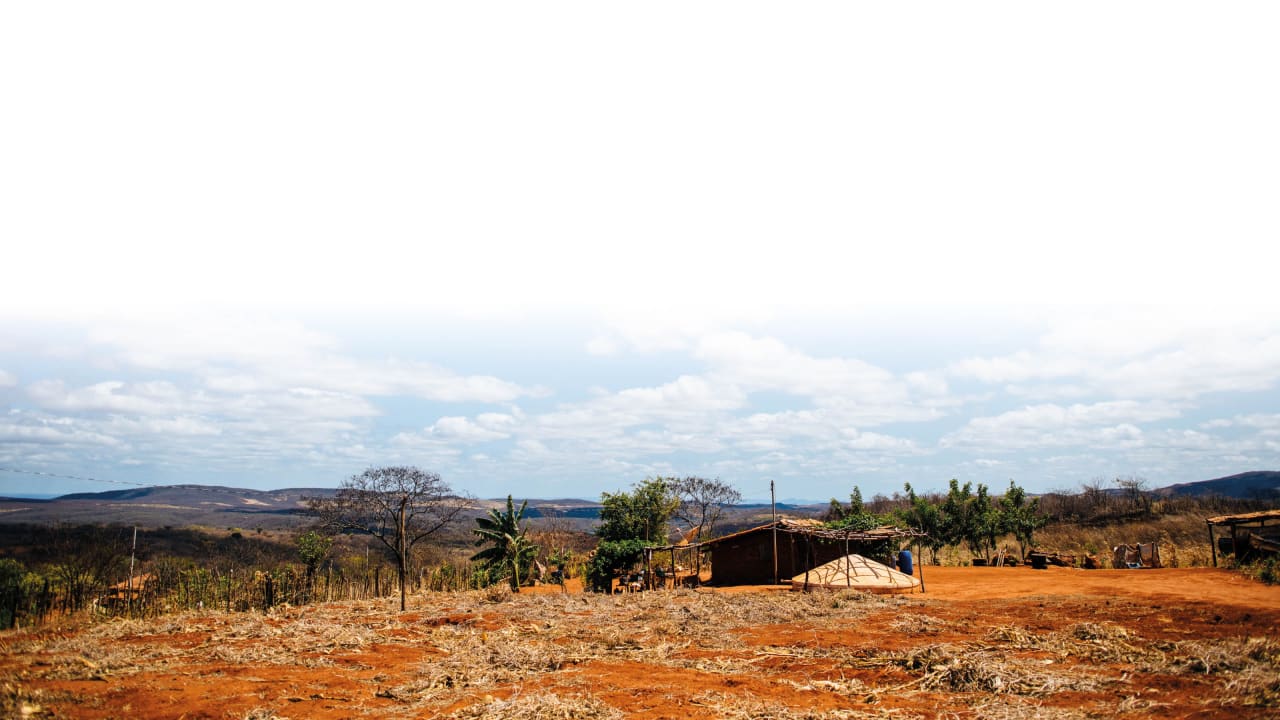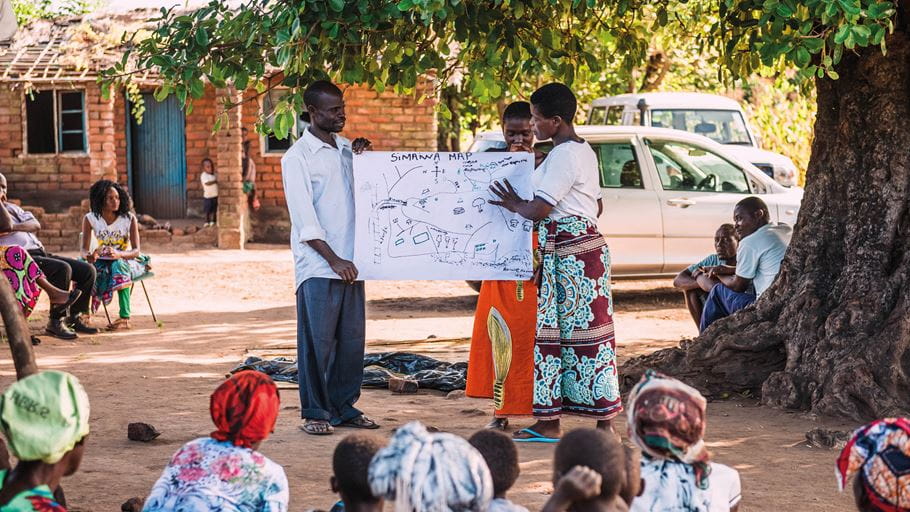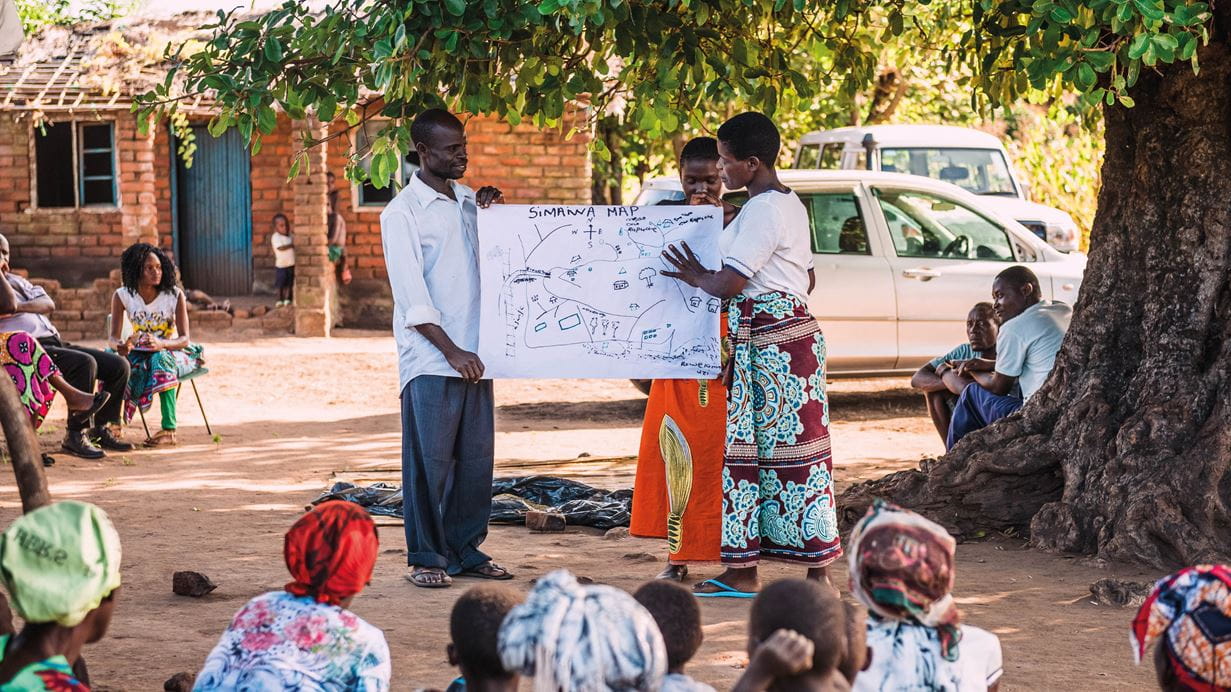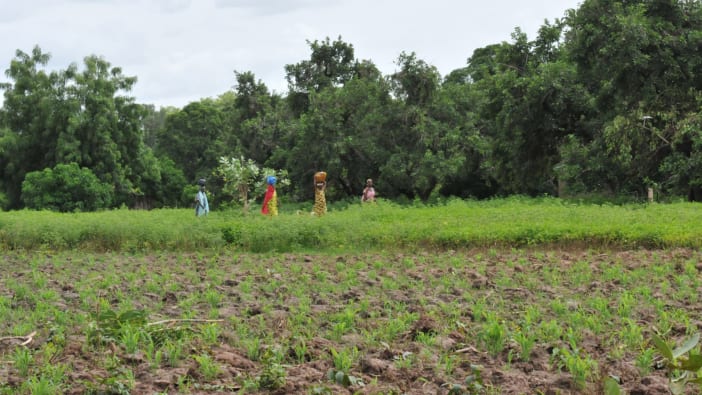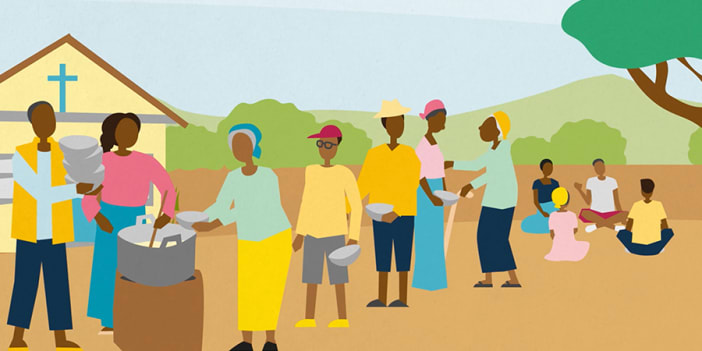Every year, millions of people are forced to leave their homes and communities because of unpredictable weather caused, or made worse, by climate change.
Some experience violent storms and floods that destroy their houses, crops and businesses. Others have to move because there is no longer enough water where they live. Environmental degradation caused by deforestation and unsustainable farming practices often makes these problems worse.
Use the following steps to help your community decide how best to adapt to current changes in the weather, and prepare for future changes. Make sure everyone has the opportunity to participate including young people, older people and people with disabilities.
Steps
1. Invite all community members to gather together on a day that works well for the majority of people. Ask the community to select a small group of volunteers (men and women) who will be responsible for planning and monitoring activities, as well as organising future discussions.
2. Use participatory approaches such as mapping (see below) to identify observed changes in the local weather over the last ten years, and the impact of these changes.
3. Discuss what might happen if the weather continues to change.
4. Agree on a few key activities that will help the community adapt to the changes and reduce the risk of disaster – ideally ones that can be implemented using local labour and resources.
For example, communities prone to flooding might decide to:
- dig drainage channels to safely move water away from homes and other property
- store seeds and agricultural implements in a raised community building.
Communities prone to drought might:
- adapt farming practices and plant trees to help retain water in the soil
- create banks along the contours of land to catch rainwater.
5. Implement these activities in a way that spreads the work evenly. Forexample, a community might agree that one member of each household will join a work party to dig drainage channels on a particular day.
6. Monitor the impact of these activities over time. Are they helping? Are there other things that need to be done, or done differently
Local government offices often have small amounts of funding available for this type of work. Encourage the planning group to advocate for funds and other support on behalf of the community.


